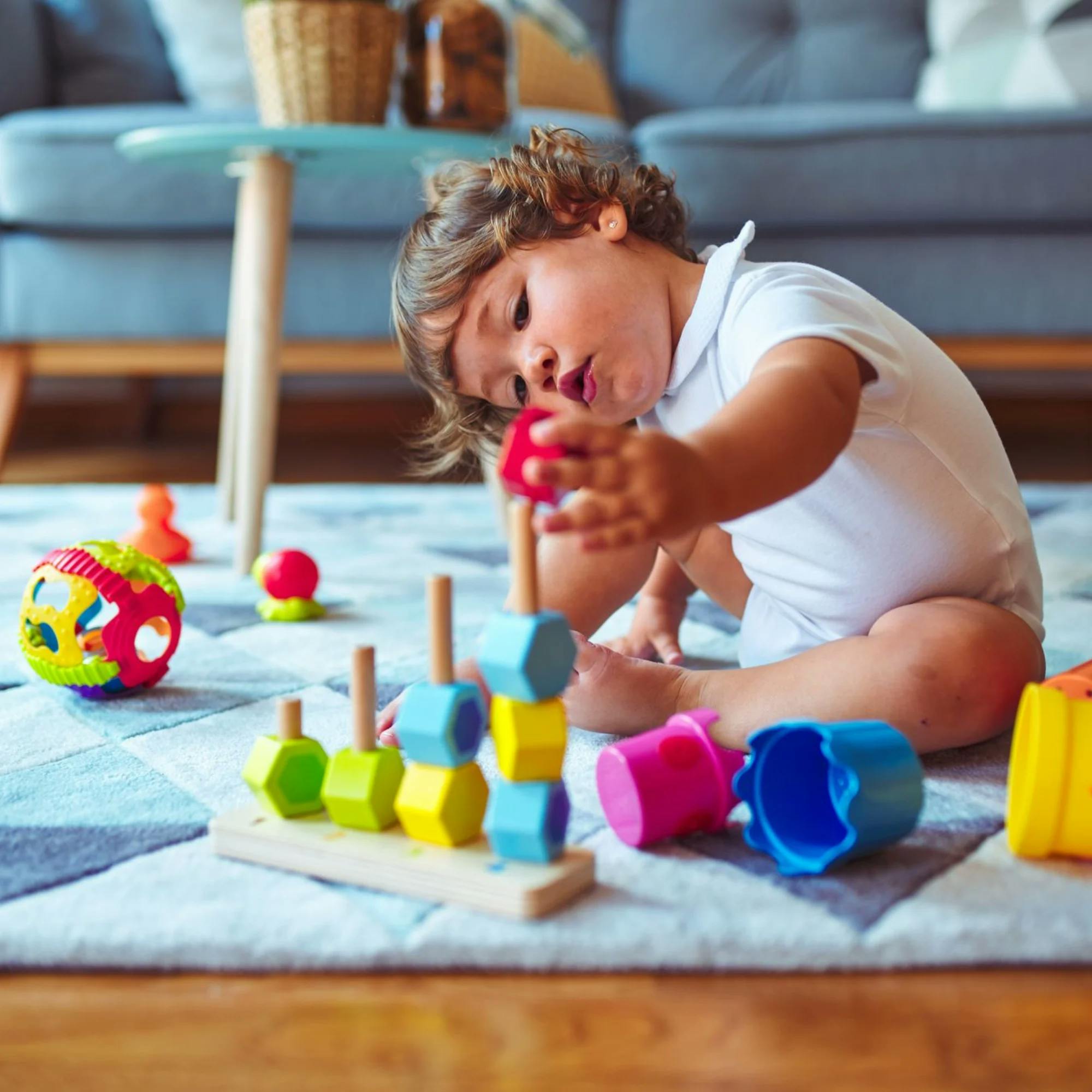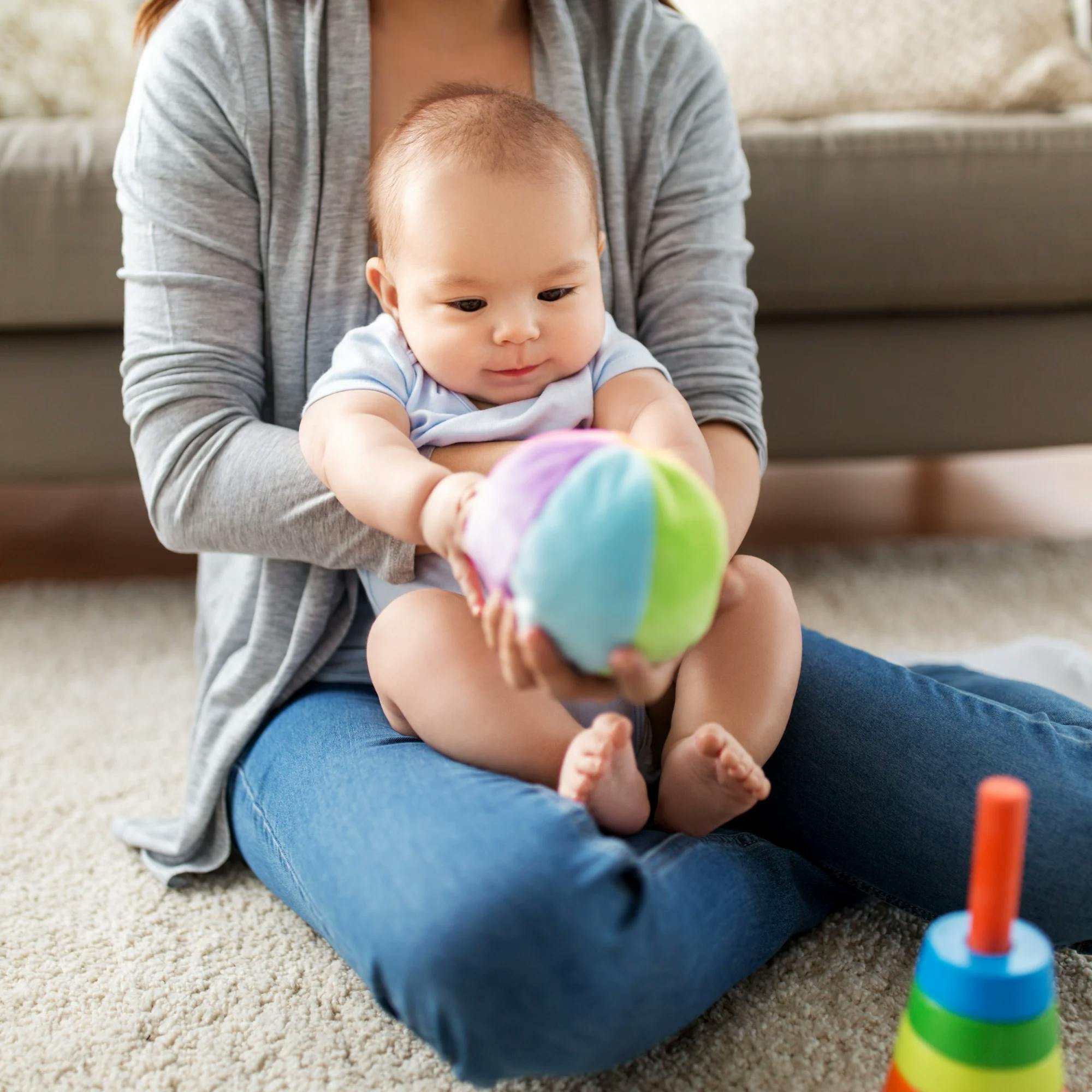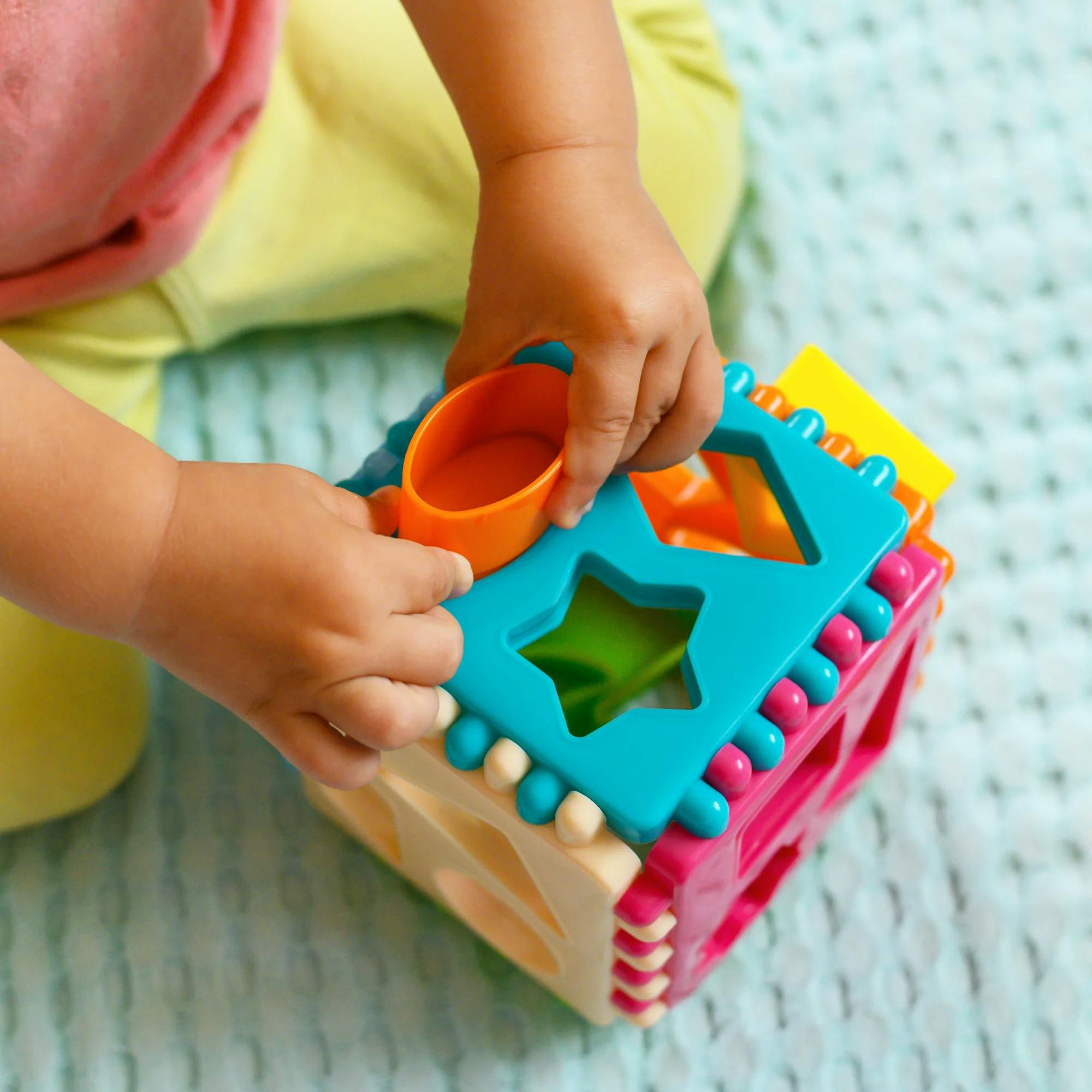
Holiday Help: Best Gifts for Infants and Toddlers to Promote Language Skills

The holiday season seems to spring up faster every year. Speaking as a mom myself, it can be a bit overwhelming to cross everything off that holiday list.
If you’re in the same boat, I’ve got you covered! Below is a list of fun toys and gift ideas that your infant or toddler will love--and that can help promote their early language skills.
The importance of play in learning to talk
Playtime is an important part of childhood development. It’s how young children learn, explore the world around them, and start growing the foundational language and social skills they need to communicate.
I’ve heard my mother (a very excited grandmother!) say countless times, “Less is more.” And as a speech-language pathologist, I know she’s exactly right! Research shows that simple toys (such as building blocks or stuffed animals) create more opportunities for parents to use descriptive language when playing with their child than elaborate toys--those bright, noisy ones with all the bells and whistles.
Simple toys create more opportunities for parents to use descriptive language when playing with their child.
Now, I’m definitely not suggesting you get rid of your child's elaborate toys. There's a time and place for them. However, for the purposes of this article I’ve compiled a list of fun, simple toys that promote speech and language development, along with how to use them with your child.


Puppets
Playing with puppets provides a ton of great opportunities for your young child to learn and model speech and language. The creator of the Muppets, Jim Henderson, said it well: “One of the nicest things about puppets is that it's your own hand in there. You can make it do anything you want.”
You can try singing a favorite song with the puppet, teaching “open” and “close” with the puppet’s mouth, have your child touch the body parts of the puppet (touch the puppet’s eyes, ears, mouth, etc.), or tell a story with the puppet. The opportunities are endless! What’s important is that you and your child are having fun and learning a thing or two along the way. Plus, puppets can be great travel companions during the holiday season to keep your child entertained.


Here are a few language skills that puppets, along with the other toys listed in this article, can help your child master:
Conversational exchanges: First your puppet talks, then your child’s puppet talks, and so on. This is the same back-and-forth exchange and engagement used during a conversation.
Sustained eye contact: Paying attention to the puppet when it’s speaking can help develop this essential social skill.
Listening skills: Encourage your baby to listen to what you or your puppet is saying.
Fine motor skills: Every time your child points to the puppet, touches the puppet, or makes the puppet move, they’re improving their fine motor skills.
Following directions: You can use the puppet to give basic, one-step directions, like “Open your mouth."
Learning directions: You can teach basic vocabulary used when providing directions, like “up,” “down,” “under,” and “over.”


Social development: Simply interacting with the puppet can increase the communication exchanges between your child and their puppet.
Emotional development: You can teach your child what feelings and emotions look like on the face of the puppet, and use appropriate language to make that connection (for example, “I feel sad. Look, my face is sad.”).
Vocabulary development: You can increase the number and variety of words that your child hears.
Confidence building: Your child’s ability to independently play with the puppet can improve their confidence and self-esteem.
Creativity: Making the puppet and having control over what the puppet does and says is creative fun.
Storytelling: You can have the puppet tell stories with a sequence of events.
Taking turns: You and your child can share the puppet or take turns making it talk.
Pretend kitchen set
I had one of these growing up and I want my son to have one, too! This is a phenomenal tool to encourage pretend play. You can use a kitchen set to foster valuable functional skills, such as following directions, taking turns, making requests, asking questions, and just overall creativity.
Think about it: We use so many words in the kitchen. It's a perfect opportunity to help your child learn opposites, like “hot” vs. “cold,” “on” vs. “off,” and “sweet” vs. “salty.”
Another great skill you can practice is sequencing, such as the steps to make a sandwich. You can try asking your child to make you a meal, and go through the order of what goes first, next, and last. Or, ask your child for a hot drink. When they hand it to you, say, “Ouch! It’s too hot. Let’s make it cooler.” Then blow on the drink to cool it off.
Finally, we follow directions when making recipes. You can help your child learn simple directions such as “wash the dishes,” “wash your hands,” “pour the water,” “cut the food,” and more.
Stacking toys
Simple wooden blocks or plastic stacking tubes can provide hours of individual play and exploration. These are excellent tools to teach functional vocabulary words. Some of these words include:
Up
Down
Fall
On top
First
Last
As you stack blocks on top of each other, try saying “up, up, up” repeatedly to reinforce the concept. When they fall over, you can say, “Oh no! It fell down!”
Toy cars
There are so many creative ways to use toy cars to promote speech and language. Let’s take a simple activity like rolling a car back and forth with your child. It may sound simple, but it requires two people to complete the task. This back-and-forth exchange mimics conversation. One person speaks, the other responds, and so forth.
When playing with your toy car, make sure to model language by moving the car forward and saying, “Go, car, go! And… stop!” You can even turn this into a game of Simon Says. “Simon says move the car up!” And finally, one of my favorite pastimes is racing two cars against each other to teach children the concept of "fast" and "slow." While you move the car, you can say, “My car is so slow! Your car is so fast!”


Toy cars are also great for:
Following directions: Tell your child where to drive their car. You can say, “Let’s drive around your room.”
Vocabulary expansion: When playing with your child, reinforce words like “forward,” “back,” “go,” “stop,” “over,” and “under.”
Turn taking: Trying sharing the car and taking turns--each person gets a few minutes of play time.


Mr. and Mrs. Potato Head
One of the all-time classic toys, and definitely the best characters in the movie Toy Story. They’re also a fantastic way to teach your child how to label body parts and articles of clothing.
You can say, “I’m putting on his shirt,” to introduce new vocabulary and functional life skills. To improve following directions, try saying, “Put on his mouth.” Or, to teach different body parts, model it first by pointing to his nose and saying, “Look at his nose!” Then ask your child to do the same: “Point to his nose.”


Children learn language through play!
Let me leave you with this. The toys you choose for your child are just as important as how you use them to promote speech and language development. Remember, you are your child’s greatest gift! So be creative. Don’t be afraid to be silly and theatrical. And most importantly, have fun! The more time you spend playing with your child, the more their language skills will flourish and thrive. Happy holidays!











